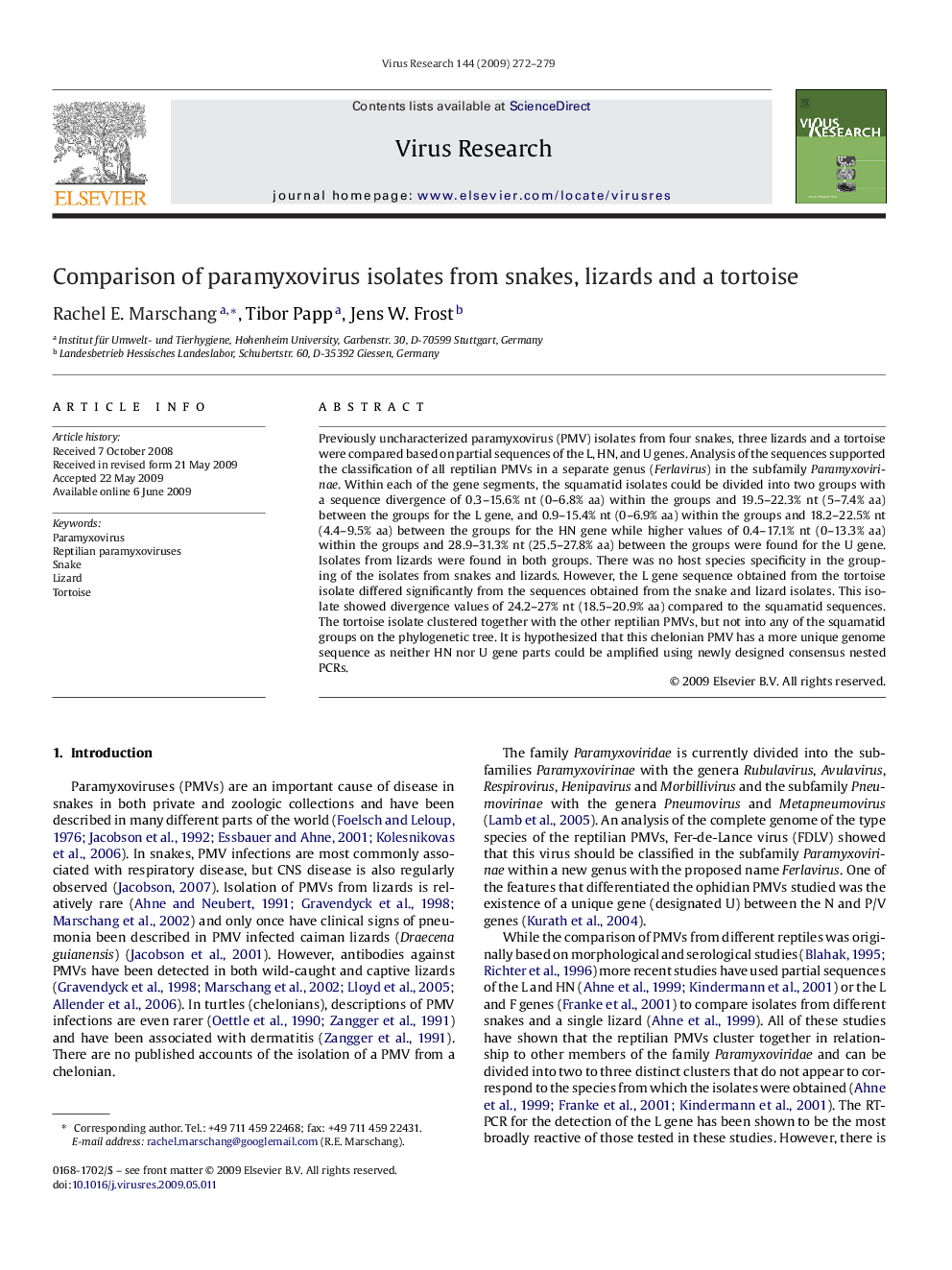| Article ID | Journal | Published Year | Pages | File Type |
|---|---|---|---|---|
| 3429686 | Virus Research | 2009 | 8 Pages |
Previously uncharacterized paramyxovirus (PMV) isolates from four snakes, three lizards and a tortoise were compared based on partial sequences of the L, HN, and U genes. Analysis of the sequences supported the classification of all reptilian PMVs in a separate genus (Ferlavirus) in the subfamily Paramyxovirinae. Within each of the gene segments, the squamatid isolates could be divided into two groups with a sequence divergence of 0.3–15.6% nt (0–6.8% aa) within the groups and 19.5–22.3% nt (5–7.4% aa) between the groups for the L gene, and 0.9–15.4% nt (0–6.9% aa) within the groups and 18.2–22.5% nt (4.4–9.5% aa) between the groups for the HN gene while higher values of 0.4–17.1% nt (0–13.3% aa) within the groups and 28.9–31.3% nt (25.5–27.8% aa) between the groups were found for the U gene. Isolates from lizards were found in both groups. There was no host species specificity in the grouping of the isolates from snakes and lizards. However, the L gene sequence obtained from the tortoise isolate differed significantly from the sequences obtained from the snake and lizard isolates. This isolate showed divergence values of 24.2–27% nt (18.5–20.9% aa) compared to the squamatid sequences. The tortoise isolate clustered together with the other reptilian PMVs, but not into any of the squamatid groups on the phylogenetic tree. It is hypothesized that this chelonian PMV has a more unique genome sequence as neither HN nor U gene parts could be amplified using newly designed consensus nested PCRs.
